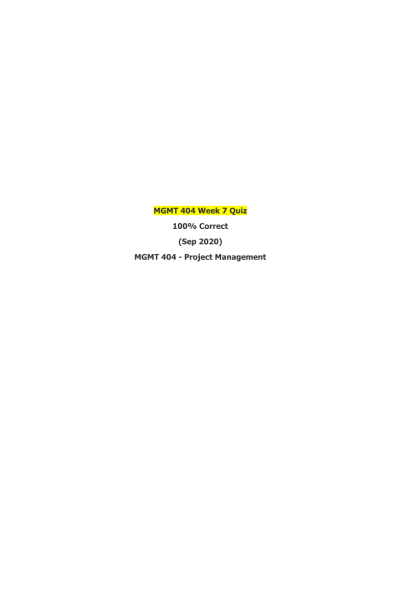- Question: Information is a key ingredient at each stage of the project supply chain, as well as within each phase of supply chain decision making.
- Question: The evaluation criteria that were developed during procurement planning to define how the team will evaluate and rank proposals should guide them in the vendor evaluation and selection process.
- Question: Self-directed teams on agile projects are largely empowered to decide what work to do and when to do it, consistent with the prioritizing of deliverables by the product owner.
- Question: When reporting performance to sponsors and management, it is often helpful to organize the information in terms of three time horizons: past, current and future.
- Question: All of the following accurately describe the features and characteristics of a contract EXCEPT:
- Question: Some organizations rely upon a formal group authorized and responsible for reviewing, evaluating, approving, delaying, or rejecting any changes to any aspect of the project plan by following a formal communication method of documenting the decision process. This group is typically known as
- Question: Two types of control are used extensively on projects and both compare actual performance against the plan: steering control and go/no go control.
- Question: In many cases, the proposal prepared by the vendor becomes a part of the final contract.
- Question: Supply chain operations require managerial processes that span across functional areas within individual organizations, and link trading partners and customers across organizational boundaries.
- Question: Change control is a process wherein change proposals to various project planning elements are:
| Instituition / Term | |
| Term | Spring 2021 |
| Institution | MGMT 404 Project Management |
| Contributor | Hachem |





















